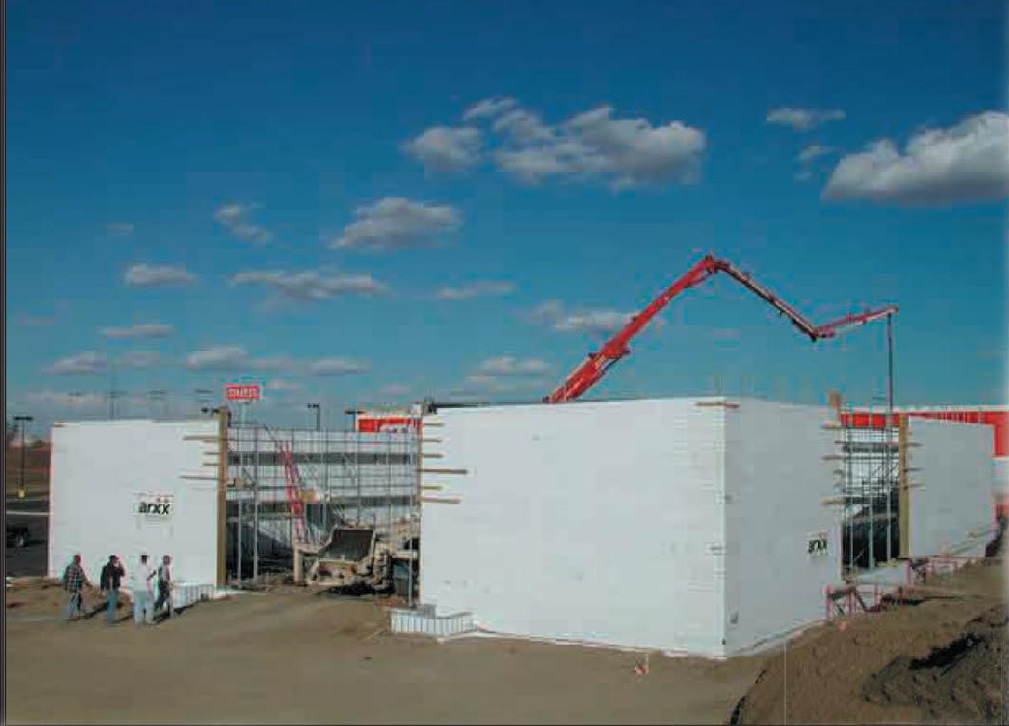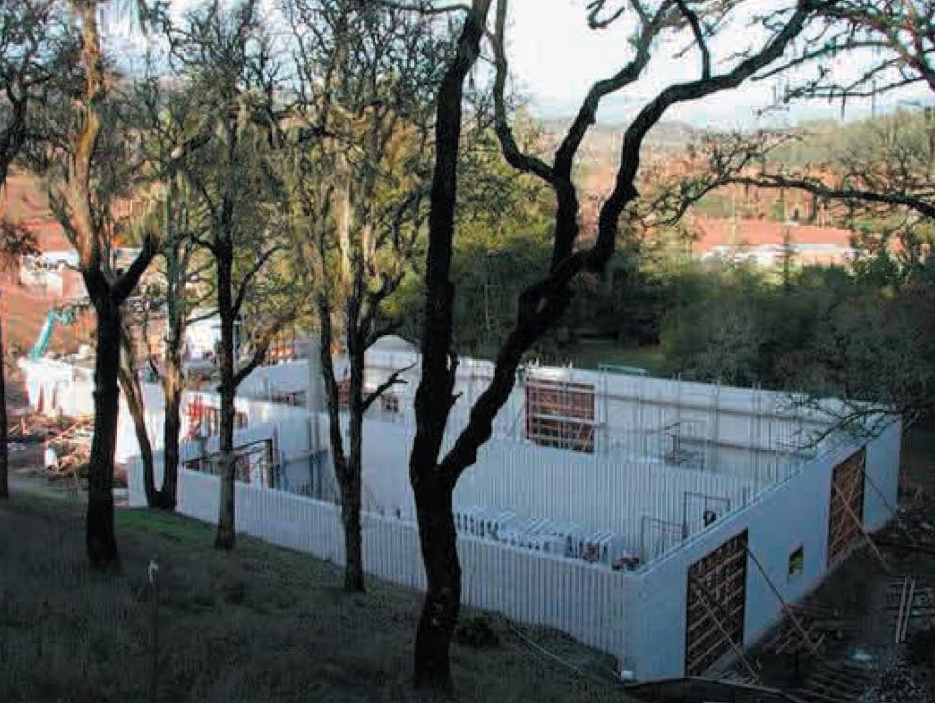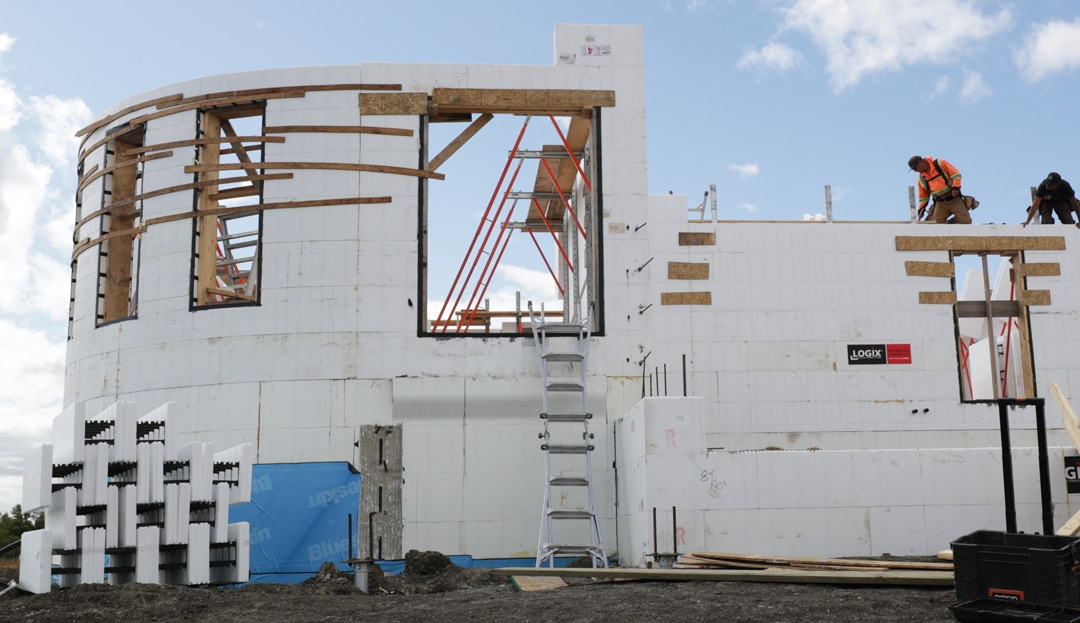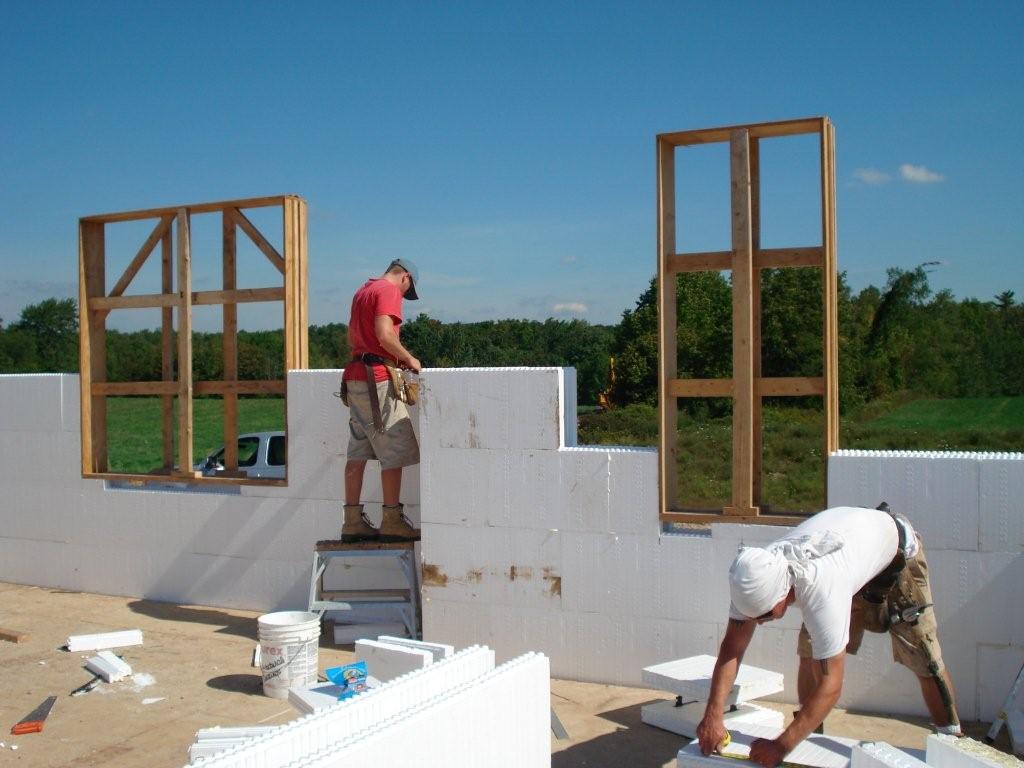It’s no secret that insulated concrete forms (ICFs) offer higher energy performance than wood-framed or CMU assemblies. But did you know that building with ICFs helps you cut your labor expenditures in two significant ways?
In fact, insulated concrete forms are deliberately designed to boost site productivity and slash labor costs. ICFs can reduce overall labor on the jobsite and the size of the installing crew, plus it can reduce the proportion of “skilled” staff needed on the crew as well.
This is how Logix ICFs help builders solve their biggest problems – a shortage of skilled labor.
The Key Design Advantage of ICFs
Insulated concrete forms such as Logix ICFs have a specific design advantage that makes them the ideal construction material for labor savings: They combine 6 construction steps into a single, straightforward package. Let’s have a look at the 6 construction components and steps that a single block of Logix ICF comprises:
- Concrete: Logix ICFs act as permanent formwork into which you pour your mix.
- Steel reinforcement: Logix ICFs come with webs for easy reinforcement placement.
- Insulation: The ICFs themselves provide two layers of continuous, high-performance insulation.
- Air barrier: The concrete wall assembly contained within the ICF panels forms an effective air barrier.
- Vapor barrier: The ICF panels function as the vapor barrier, so you don’t need to install one separately.
- Furring strips: No additional furring strips are needed when you build Logix ICF walls.
Thus, building with Logix ICFs has two major impacts on your use of labor:
- You will tend to use less labor overall.
- You will tend to need a lower % of “skilled” crew members on site.
Case Studies – ICFs Require Less Labor Overall
Here are some actual results from three sample ICF projects.

Project 1:
Bed Bath & Beyond, Apple Valley, Minnesota
- Total wall area: 14,393ft2
- ICF quantity: 2,650 blocks
- Man hour rate: 0.08 mh/ft2

Project 2:
Pier 1, Minot, North Dakota
- Total wall area: 8,350ft2
- ICF quantity: 1,500 blocks
- Man hour rate: 0.034 mh/ft2

Project 3:
Winery in Healdsburg, California
-
Total wall area: 12,450ft2
- ICF quantity: 2,234 blocks
- Man hour rate: 0.08 mh/ft2
Two of these projects came in at about .08 manhours/sq ft.
The Logix ICF Labor Rate Worksheet provides a general guideline for ballparking the labor rates of upcoming projects. Most straightforward projects tend to calculate out at .08 to .10 man hours per sq foot with this worksheet.
In contrast, per RS means, the average man hours per square foot of a Concrete Masonry Unit (CMU) wall is typically 0.111 mh/ft2 for an 8-inch block and 0.192 mh/ft2 for the heavier, 12-inch block.
But Logix ICF offers reduced labor rates compared to wood-framed buildings, too. Just have a look at this case study, where a Winnipeg builder constructed two identical mid-rise residential buildings — one with a wood frame, the other with ICFs. The wood-framed building required a total of 18,000 man hours, while its identical ICF twin was built using only 12,000 man hours — in this case that was a labor reduction of a whopping 34%!

Workers building with LogixICF
Survey: ICFs Require A Lower % Of Skilled Labor
A simple 6-in-1 solution such as Logix ICF can also reduce the need for skilled labor, as building with ICFs is felt by many builders to be somewhat simpler than building with light wood-frame components.
But how much of a skilled labor reduction can you anticipate when building with ICFs?
Well, that depends on the type of building you’re constructing. We did a survey of ICF builders, asking them this exact question. Here is a quick summary of the results:
- Single family homes: The percentage of skilled labor engaged on site drops by about 20% when switching from a wood-frame to an ICF and concrete structure.
- Mid-rise homes: The respondents recorded a drop of 29% in the skilled labor used on ICF mid-rise construction projects compared to similar wood-frame buildings.
- Commercial projects: The portion of skilled labor plummets by 54% when large, commercial projects are built with ICFs compared to CMUs.
Wrapping It Up
Choosing an ICF product such as Logix ICF slashes your labor savings significantly in 2 ways, largely thanks to the optimized design of the blocks:
- ICFs require less labor: Overall, ICF buildings can require less labor than a CMU or wood-frame equivalent.
- ICFs can require a lower % of skilled labor: Not only should you require with less labor by choosing ICFs, you may well be able use a lower proportion of skilled workers as well.
And given the current state of the labor market in the US and Canada (a state that’s not about to change anytime soon), choosing a product that reduces your reliance on labor — and on skilled labor in particular — is a no-brainer.






